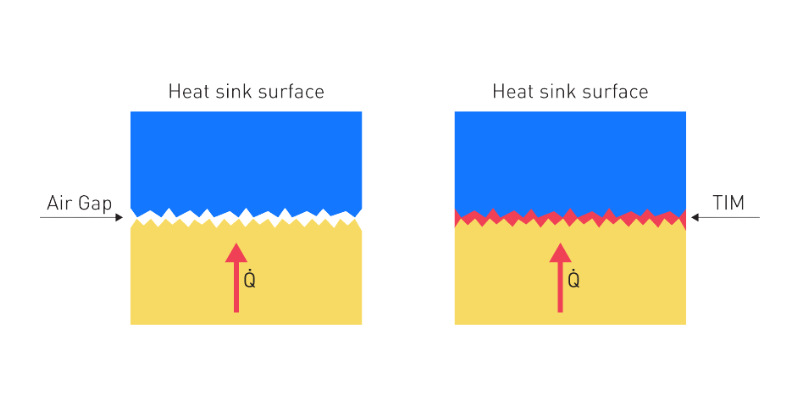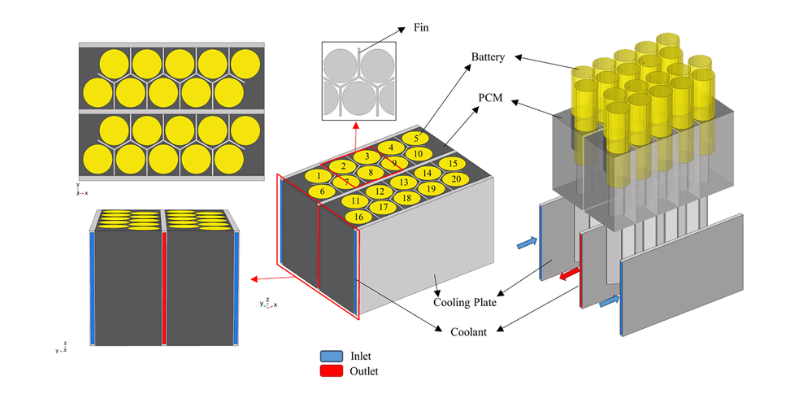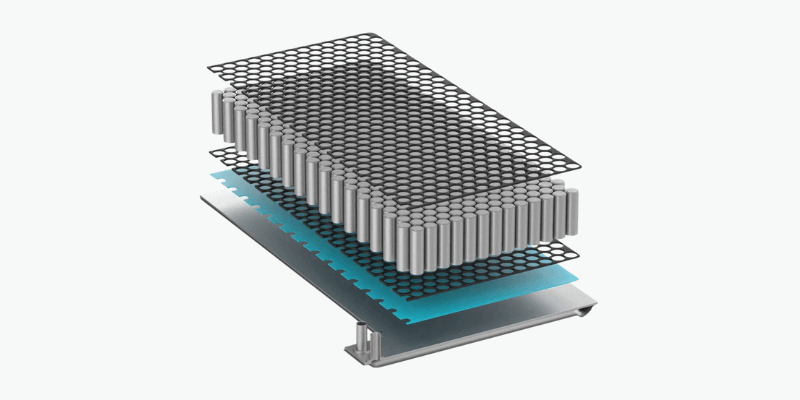Custom battery packs have their own pace for charging and discharging, which naturally generates some heat. A bit of warmth is fine, but too much can be a problem. Environmental temperatures also play a role – hot conditions can be damaging, while cold ones reduce efficiency.
That’s why thermal management is important in designing these battery packs; it ensures smooth operation by maintaining the right temperature and preventing overheating or overcooling during use and charging.
What is Thermal Management?
Thermal management is the process that keeps a system within its operating temperature range.
In electronic devices, it helps dissipate excess heat to prevent overheating. Since most systems generate heat, there’s a risk of damaging delicate components if heat accumulates too much. Moreover, excessive external heat can also interfere with electronics.
Engineers use thermal management solutions across various industries, such as aerospace, automotive, batteries, and data centers. Maintaining optimal temperatures is crucial in design because it enhances performance and durability.
To manage heat, they often rely on tools like heat sinks and fans for cooling or liquid-cooled systems with cryogenic fluids for rapid cooling. Additionally, thermal engineers may use insulating materials to reduce heat transfer to sensitive areas.

What is The Difference Between Active and Passive Thermal Management?
Engineers develop thermal management systems using both active and passive technologies.
Active components, like fans and pumps, require an external power source, while passive elements, such as heat sinks and pipes, do not.
Passive technology enhances natural processes like conduction, convection, or radiation within the system.
Both types aim to improve heat dissipation and maintain operating temperatures. Since passive tools don’t need extra energy, they’re usually more budget-friendly than active thermal management options.
Examples of Active Cooling Methods
Forced convection
A lot of active cooling devices use fans or blowers to boost airflow around hot parts, which helps cool things down. By pushing the hot air away quicker, this method really ramps up convection and makes heat dissipation way more effective.
Thermoelectric coolers
Thermoelectric coolers, or solid-state heat pumps, are pretty common when working with semiconductors. They’re slim and compact, usually sandwiched between a heat sink and a heat source.
When you apply voltage to them, they create a temperature difference between the two sides. This bigger temperature gap helps boost the rate of conduction.

Examples of Passive Cooling Methods
Heat sinks
Heat sinks are common in passive cooling gear.
Essentially, a heat sink, made of a metal like copper or aluminum that conducts heat well, attaches to the heat source. Thermal energy moves through the metal by conduction from the hot part and is released into the surrounding air through natural convection from the heat sink’s surface.
Heat spreaders
Heat spreaders are popular passive cooling devices that use thermally conductive foils or metal plates to distribute concentrated heat over a larger area. They typically act as an intermediate material between the heat source and secondary heat exchangers.

Thermal Management for Different Battery Chemistry
Different types of batteries work best within certain temperature ranges. Here’s a quick rundown on their ideal charge and discharge temps:
- Lithium-ion: Charge between 0°C and 45°C; Discharge from -20°C to 60°C
- NiMH/NiCAD: Charge between 0°C and 45°C; Discharge from -20°C to 65°C
- Lead Acid: Both charging and discharging are good from -20°C to 50°C
Manufacturers rely on technical data and computer models tailored to customer needs to simulate how batteries perform in various situations, including temperature changes. These models help designers figure out the thermal limits so they can create effective thermal management systems, making sure battery packs work well in all sorts of conditions.

What Happens If Batteries Lack Thermal Management
Batteries heat up due to resistance in the electrical current. As the current flows through parts like connections and electrolytes, it generates heat. More resistance results in more heat, which can wear down materials and reduce battery capacity, sometimes even causing thermal runaway.
Conversely, cold temperatures lower conductivity, making it difficult for electrons to move and increasing resistance. This can lead to poor performance and charging issues with certain types of batteries.
Conclusion
Thermal runaway and reduced productivity are key thermal management issues for batteries. Many companies require battery packs to pass thermal testing for certification. Understanding your specific application and industry helps design a compliant battery pack that demonstrates safe operation.

